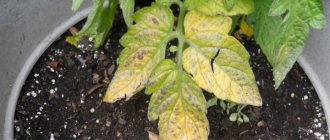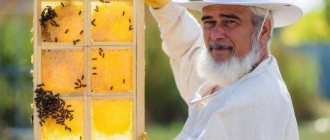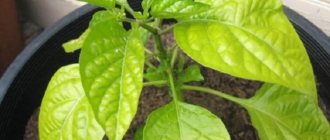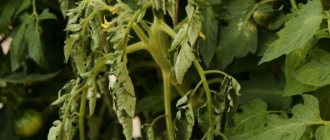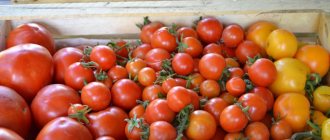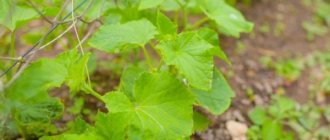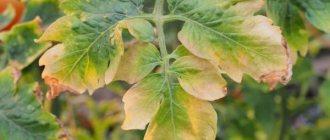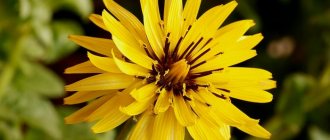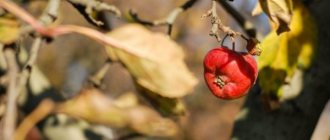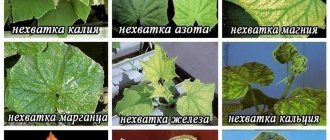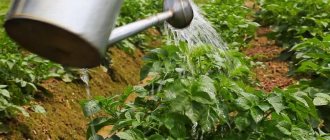The main reasons for yellowing of onions in the garden
Yellowing of the feathers of onions growing in the garden is caused by various factors. Yellow spots and dried ends that appear ahead of schedule are caused by the following reasons:
- damage by insect pests;
- diseases;
- deficiency of substances necessary for plant growth and development;
- unfavorable weather;
- violation of the rules of agricultural technology;
- soil composition.
Diseases
The yellowing of onion feathers is often caused by the defeat of plantings by diseases such as bacterial rot, bottom rot, rust, Alternaria, and yellow viral dwarfism of onions.
Reference. Plant infection by fungi and bacteria is often provoked by the use of low-quality planting material.
AMONGIA + SALT + MANganese = SUPER REMEDY FOR DISEASES AND PESTS OF ONIONS..saving onions.
Pests
The consequences of insect pest attacks on onion beds are noticeable by yellowed feathers. Plants dry out when they are damaged:
- onion moth;
- tobacco thrips;
- onion secretive proboscis;
- stem nematode;
- weevil;
- onion fly.
Nutritional deficiencies
When growing vegetables in infertile soil, yellowness of onion feathers is also observed. The problem is caused by a deficiency of certain substances, in particular nitrogen.
Reference. With a lack of nitrogen, onions in the beds not only turn yellow, but also die.
Improper care
Violating the rules of onion agricultural technology is fraught with the appearance of yellowness. The culture is not considered capricious in terms of care, however, with gross agrotechnical errors, the onions will begin to turn yellow and dry out.
Important. To prevent onion planting from disappearing, choose the right place for the garden bed, regularly water the plants, and use fertilizers. The rules of care are determined by the varietal of the onion.
Adverse weather conditions
Drought is often the cause of yellowing onions. In the absence of precipitation in the form of rain and properly organized watering, the process of sap flow fails. The plants continue to gain mass, but the feathers begin to turn yellow and dry out.
Frost can also cause a problem. Yellowness affects plants if they were planted in open ground ahead of schedule and exposed to low temperatures.
Soil composition
Acidic soil provokes the appearance of yellowish tips or spots on onion feathers. The vegetable loves fertile, loose soil with a neutral and alkaline reaction.
Care errors that cause onions to turn yellow
The appearance of yellowness on feathers is not always caused by insects or infections. Improper care of onion plantings slows down development and causes rapid death of the crop.
Insufficient watering
Some people believe that onions do not need watering, since rain does this job perfectly. It is important to understand that plants require regular water treatments, but at the same time do not like overflow.
Watering rules:
- water once every 3 days from the moment the bulbs are planted in open ground;
- carry out procedures before noon;
- the water must have a temperature of +18….+25°C;
- Pour water under the root, trying not to get on the feathers.
Additionally, it is necessary to loosen the soil and remove weeds. Otherwise, the crust on the top layer of soil will not allow air and sunlight to reach the root system, and the grass will take all the nutrients from the soil.
It is advisable to combine watering with fertilizing. Experienced gardeners recommend diluting ammonium nitrate, superphosphate, and potassium salt in water. When mixing, you must follow the instructions. The plantings are watered for the first time when the onion reaches a height of 3 cm, and the second time after 7 days.
Deficiency of nutrients in the soil
Onions often turn yellow due to a lack of nutrients. Nitrogen deficiency can be determined by its appearance: leaves become faded and fruits become soft. Even at the stage of planting the bulbs, it is recommended to fertilize the soil with humus or compost.
Means for saturating the soil with nutrients:
- Dissolve 200 g of mullein in 10 liters of water, add 1 tbsp. l. urea. Water the beds with the resulting liquid every 2 weeks. Consumption - 2-3 liters per 1 sq. m. Stop fertilizing after 3 waterings.
- Soak 200-500 g of nettle in 10 liters of water, leave for 1 week. Additionally, dilute the infusion with water in a ratio of 1:10. Then strain and start watering the plants. This root feeding should be used every week, and foliar feeding should be used once a month.
When planting onions, a small amount of peat, wood ash and sand should be added to the soil. The components will not only saturate the soil after winter, but will also repel root pests.
Bad weather conditions
In hot weather, onion beds should not be allowed to dry out. It is necessary to water the plants every day, but do not forget about the level of soil moisture, avoiding excessive moisture.
Prolonged rains have a detrimental effect on the bulbs. It is better to cover the plantings with agrofibre. The material will create normal conditions for growth, retain heat and prevent water from getting to the bulbs.
Diseases that can cause yellowing and methods to combat them
Onion plantings are affected by diseases (bacteria, fungi, viruses) due to violation of the rules of agricultural technology. To save the crop, you need to figure out how to deal with diseases that lead to yellowing and death of plants.
Rust
Rust is a fungal infection that manifests itself as spot yellowing and the formation of bulges on the onion. The first symptoms appear in May-June. Over time, the diseased plant begins to turn black and lose leaves.
Only prevention will save you from rust:
- compliance with crop rotation rules;
- warming up the planting material on the eve of storage;
- warming up the seedlings for 12 hours at a temperature of + 40°C before planting in open ground;
- spraying plants with copper oxychloride (1 tablespoon of the drug is dissolved in 10 liters of soap solution), followed by treatment with the drug “HOM”, carried out after 7 days.
Bottom Rot
Bottom rot threatens all types and varieties of onions. This is damage to the bulb by the Fusarium fungus that lives in the soil. Diseased plants turn yellow and die.
Compliance with the rules of vegetable agricultural technology will protect you from the problem. Prevention consists of:
- choosing the right place for the garden bed - it should not be subject to flooding;
- planting onions in an area where cereal grains were previously grown;
- disinfection of sets and seeds with a fungicide like “Fundazol”;
- planting in the garden on time;
- proper storage of the crop.
It is possible to combat bottom rot that has affected onion plantings only in the early stages of the disease. Treating the beds with a solution of copper oxychloride will help.
Alternaria blight
Signs of onion damage by Alternaria include:
- whitish spots on the leaves, becoming concentric over time;
- breaking and drying of feathers with spots;
- the appearance of a gray-black coating if there is high humidity.
Old feathers are more susceptible to fungal infection. The disease leads to blackening of the leaves, damage to the bulb - its wateriness increases, and a brownish coating appears between the layers.
They fight the problem with the drugs “Acrobat”, “Cabrio Duo”, “Poliram”, “Fitosporin”.
Onion yellow virus dwarfism
Symptoms of the disease:
- the appearance of yellowish stripes, curvature of feathers;
- complete yellowing of feathers;
- deformation of plants and the bulb itself;
- absence of fruits on the testes.
The disease can completely destroy the planting. The virus is stored in the bulb.
Methods of protection against the virus:
- aphid control;
- tool processing;
- separation of onion beds by other representatives of the subfamily;
- removal of affected plants.
ONION DISEASES
Damage to onions by pests is almost always accompanied by diseases: bacterial rot, bottom rot, rust.
Bacterial rot has three main symptoms: rotten bulbs, dried flower stalks and yellow feathers. Unfortunately, bacterial rot can only be combated after the fact: burn infected bulbs and disinfect them before planting them in the ground.
Bottom rot manifests itself as yellowing and subsequent death of the tips of the onion. Dig such a bulb out of the ground - on the bottom you will notice a white mycelium. Over time, such white mycelium turns into pink mycelium. The plant itself becomes watery.
A method of preventing bottom rot is to treat the bulbs with a fungicide solution before planting in the ground. An example of such a fungicide is Fundazol.
Rust on onion stems first has a yellowish color, then convex pads appear on the affected areas. The plants will then turn black and fall off. Just as in previous cases, pre-sowing treatment and preventive measures will help prevent rust. Spray the onions with a solution of copper oxychloride. The solution is prepared as follows: for 10 liters of water, 1 tablespoon of liquid soap and the same amount of the preparation. After a week, this treatment should be repeated.
Pests
A common cause of yellowing onions in the garden is insect attacks. To save the harvest, consider methods of pest control.
Onion moth
Onion moths, which look like a small brown butterfly, are found by gardeners in the garden at the end of spring. She lays larvae, which, becoming caterpillars, eat the plants.
Prevention of the problem is:
- in planting seedlings in the early stages, allowing harvesting before the pest becomes active;
- use of fertilizers belonging to the insecticidal series;
- competent choice of “neighbors” in the garden.
They fight onion moths by treating the bed with insecticides like “Iskra”.
Thrips
Onion (tobacco) thrips are tiny pests. The length of their body is up to 1 mm. The insect is dangerous not only for onion planting, but also for other garden and vegetable crops. Whitish spots appear on the affected onion, which subsequently merge, and the leaves themselves fade.
The fight against thrips involves spraying the beds with insecticides “Iskra”, “Confidor”, etc.
For prevention, planting material is disinfected with hot water: the bulbs are immersed in water at a temperature of +45°C for 10 minutes. Then the seeds are washed with cold water.
Plants that have already been infected by thrips are burned.
Onion fly
The onion fly invasion is observed in early spring (April - May). The main symptom is yellowing of the tips of the feathers. If you dig up a vegetable, you can see that the fruit itself has rotted.
It is easier to scare away a carrot fly from the beds than to fight it. Pollinating the rows with a mixture of tobacco dust and sunflower ash, taken in a 1:1 ratio, will help. Affected bulbs are dug up and destroyed.
Stem nematode
Yellowing and wrinkling of onion feathers is a symptom of an attack on the plant by a stem nematode . If you rip open the affected leaf, you will see small thread-like white worms in the middle.
Nematode control measures include preventive treatment of seedlings and soil before planting. In the summer, when the parasite larvae move from the bulb to the feather, it is necessary to immediately burn the diseased plants so that the entire harvest is not lost.
Stem nematodes of potatoes and onions
Weevil
If yellowing of the feather is observed, and passages are visible through the plant film, it means that the leaf is being eaten from the inside by the larvae of the onion secretive proboscis (weevil). They look like yellowish-white caterpillars with a brown head. The parasite reaches 7 mm in length.
If bugs are found on the onion bed, they are collected from the leaves before they lay eggs. A deterrent measure is mulching the soil with ash. When beetles spread, the bed is treated with Karbofos.
Plants damaged by the larvae are burned.
Lack of nutrients in the soil
Nitrogen deficiency often causes yellowing of onion feathers. This happens if humus or compost was not added to the soil on the eve of planting.
Nitrogen deficiency is determined by the appearance of plants. The leaves become faded, the fruits become small.
To compensate for the lack of nitrogen, feed the plants with mullein:
- Dissolve 200 g of this natural fertilizer in 10 liters of water, adding 1 tablespoon of urea to the resulting solution.
- The resulting product is used for watering beds (consumption 2-3 liters per 1 m²). The procedure is repeated after 2 weeks if necessary.
You cannot feed plants with mullein solution more than 3 times a season.
Nettle infusion will also help solve the problem:
- Soak 200-500 g of raw material in 10 liters of water and infuse for 1 week.
- The infusion is filtered and used for watering the beds, after diluting it with water in a ratio of 1:10.
Root feeding with this product can be used once a week, foliar feeding (spraying leaves) - no more than once a month.
Nitrogen deficiency
In this case, one completely logical question arises: how to feed the onion plant, because diagnosing this condition is very simple. Not only the onion, but also all other crops that are located near the onion fall within the damage radius. In a short time, the tips of their leaves turn yellow and dry, they become more faded in color, the fruits change shape and seem to shrink.
Even in this case, you can observe the bending of the edges of the leaves, and spots similar to lichen appear on them. This is often caused by a long rainy season or by the fact that the garden is watered too much. Then the beneficial substances are simply washed out from the top of the earth into the depths, where they become inaccessible to the roots. In order for the harvest to be good, the plants need to be fed. If the onion feather turns yellow in places, darkening and pronounced lethargy of the arrows appear on it, it’s time to start preparing fertilizer.
When the process of yellowing of the onion occurs and the reason for this is a lack of nitrogen, in order to cure the onion plant it is necessary to apply fertilizer. Careful and proper care will help quickly restore normal condition. Professionals warn that non-compliance with the dosage and excessive nitrate nutrition triggers active vegetative processes. That is, the gardener will observe a rapid increase in green mass, which develops to the detriment of the root crop. This is bad initially when onions or heirloom onions are planted, because planting such varieties provides for a good, rich harvest.
How to make a solution
The solution consists of the following ingredients:
- Food waste (it must be of vegetable origin: peelings from vegetables, grounds from coffee or tea, etc.).
- Green grass, thanks to which you can get additional vitamins.
- Weeds, if there are none, seeds will do.
- Straw, hay.
Water is poured into a large container, ideally it will be rainwater, and everything that was collected is added:
- hay;
- grass;
- peeling vegetables;
- crystallized honey;
- expired condensed milk;
- sour wine;
- a few spoons of sugar.
This mixture must be stirred thoroughly, then left until active fermentation begins, which will be indicated by a strong aroma. If it is hot outside, then the solution will need several days (up to 5) to be ready; if the weather is cool, it will take 1.5-2 weeks. Next, take 1 liter of nitrogen fertilizer, dilute it in 10 liters of water, and water the onion plant with it.
It is best to fertilize root crops in the garden during rain or when the ground is still wet. If it’s hot outside and no rain is expected, then the garden needs to be watered first. Plus, urea, which many know as urea, is used as mineral fertilizers. It must be used with extreme caution, as it promotes the appearance of fungi.
The product provides high-quality care, because if the bulb, due to certain conditions, does not receive enough useful components, you can see yellowing leaves, spots, etc.
Failure to comply with care rules
Errors in care sometimes lead to yellowing of plants in the garden. One of them is improper watering of onion beds.
To avoid the problem, water the onions once every 3 days when the crop begins to grow, before noon. Water with a temperature of +18 to +25°C is poured under the root.
Reference. It is advisable to combine watering with fertilizing. It is recommended to dissolve ammonium nitrate, superphosphate, and potassium salt in water. The plants are fed the first time when they reach a height of 3 cm, the second time – after 7 days.
Yellowing of onions is caused by an excess of weeds that take nutrients from the soil. Regular weeding will prevent this.
Loosening after each watering also prevents yellow spots from appearing on onions. The procedure enriches the soil with oxygen and helps destroy onion fly eggs.
Adverse weather conditions
If there are no traces of disease on the green onion set, there are no larvae or rot in the shoots and heads, and the above-ground part gradually turns from green to yellow, the plant simply does not have enough moisture.
A shallow root system cannot provide water from the lower layers of the soil. Therefore, it is necessary to water the onions so that they do not turn yellow often, once every 3 days. It must always be in moist soil until the end of the head formation. You should water not under the bulbs, but in the grooves between the rows.
As soon as a change in the color of the feather is noticed in the summer, they immediately begin to water the beds. After this, it is worth feeding with an infusion of yeast, which stimulates root regrowth.
Yeast infusion improves the composition of the soil and strengthens the roots; it works only in warm weather on warm soil. Pour 10 g of dry yeast and 2 tbsp into a bucket of warm water. sugar, leave for 2 hours, dilute in 50 liters and water the garden bed.
Stop any irrigation 1-1.5 months before harvesting, otherwise the vegetable will be tasteless and poorly stored.
Plants planted very early may be subject to return frosts on the soil. Sharp temperature fluctuations have a detrimental effect on immature seedlings. An ash extract will help onions get out of a stressful situation. Take 0.5 kg of ash per 10 liters, leave for 3-5 days, stir regularly. Water the planting with a watering can, sprinkling the greens with a nutritious infusion.
Traditional recipes to combat yellowing
Folk remedies will help solve the problem of yellowing and drying onion feathers caused by pests:
- Saline solution . Dissolve 200 g of salt in a bucket of water, add a little ammonia and 3 handfuls of ash. The product is watered between the rows, then the soil is loosened. It cannot be used often - only 2-3 times per season. Apply once every 10-15 days until the onion feather turns green.
- Soda solution. Dissolve 100 g of soda, 1 tbsp in a bucket of water. l. iodine and add 2-3 bags of potassium permanganate. The product is used for watering beds, after diluting it with water in a ratio of 1:10. One plant will require no more than 1 cup of solution. When watering, avoid getting the product on the leaves.
- Infusion of wormwood, dandelion, calendula. The bucket is filled halfway with herbs and filled with warm water. Infuse in a dark place for 2 days, then filter. Dilute with water in a ratio of 1:10 and add a little liquid soap. Spray the garden bed with the resulting product, avoiding contact with the leaves. Plants affected by pests are treated with herbal infusion no more than 3-5 times per season.
An excellent preventive measure is sprinkling the rows with wood ash, tobacco dust, and ground pepper.
WHAT MAKES ONIONS AND GARLIC TURN YELLOW?! AND WHAT TO DO?!
Insects
There are many pests that can cause damage to growing onions and cause yellowing of the tips of the feathers:
- Onion fly, the larvae of which eat the heads from the inside. It appears during the flowering of lilacs.
- The secretive proboscis or weevil, whose yellow larvae with a black head develop in May inside a green feather, eating it. In mid-June, the second generation of beetles gnaws on the pedicels of the inflorescences, destroying the seeds; the pest is especially fond of the beetle.
- The stem nematode breeds offspring in the bulb, which provokes cracking of the head, deformation and drying of the green mass of the plant part.
- Tobacco thrips suck the juice from the leaves, leaving lightish spots on them. This pest is especially annoying to plants in the greenhouse, where it appears in early spring, and in beds - only in June.
- The onion moth does not cause harm itself, but its yellow-green caterpillars eat the leaves from the inside. Traces of the presence of larvae are clearly visible on the greenery: light longitudinal irregular lines. Caterpillars attack onions, leeks and garlic.
To prevent the appearance of pests, the following measures must be taken:
- observe crop rotation at intervals of 4-5 years;
- select only healthy material for planting;
- warm up the seeds before sowing in hot water at a temperature of +50 degrees for 5 minutes and cool in cold water (from thrips and nematodes);
- make early disembarkation;
- make combined beds with carrots, marigolds and calendula, their smell repels flies and moths;
- set traps for flying insects;
- cut off infected greens with weevil larvae at a level of 3-4 cm;
- treat the plantings with dry mustard, a mixture of 200 g of ash and 1 tsp. tobacco dust and red hot pepper, spray the beds with an infusion of tansy, celandine, potato and tomato tops (the most appropriate time for this operation is when the lilacs are blooming, when the fly season begins);
- 14 days after germination, treat the feather with tar infusion: 1 tbsp. 10 liters of tar, add 20 g of liquid soap;
- water each plant with 1 cup of solution prepared according to the recipe: for 10 liters take 3 drops of iodine, 1 drop of potassium permanganate, ½ tsp. boric acid and 1 tbsp. ammonia;
- thrips are destroyed by the biological insecticide Spintor;
- a remedy that helps prevent the appearance of nematodes in the soil: dilute 1 g of baking soda in 1 liter and water the hole (3 liters per 1 sq.m.);
- against parasitic worms in the spring, add the ameliorant percalcite (200 g per 1 sq.m.), urea, and ammonia water to the soil;
- in extreme cases, use chemical insecticides such as Iskra or Metaphos (for onion moths), Bazudin or Kreotsida PRO (for flies), Karbofos (for weevils), Confidor (for thrips);
- in the fall, carefully remove plant debris and dig the soil deeply, which leads to the death of many larvae and adults from frost;
- Dry the crop in the sun for 5-7 days.
Prevention measures
The best way to prevent the problem of yellowing of onions is prevention, which consists of following the rules of agricultural practices.
Experienced gardeners recommend:
- do not return to growing onions in the old plot earlier than after 4 years;
- grow a crop after pumpkin, zucchini, potatoes, beans, peas, tomatoes;
- carry out pre-sowing treatment of seedlings;
- do not compact the planting with carrots so that it does not inhibit the growth of onions;
- take care of fertilizing;
- place the bed in a sunny and ventilated place where water does not stagnate;
- regularly weed and loosen the beds;
- observe the watering regime - several times a week, 10 liters per 1 m²;
- Harvest the crop on time and dry it.
THE VARIES OF WEATHER IS ANOTHER FACTOR AFFECTING THE HEALTH OF ONIONS
Onions in your garden equally dislike prolonged rains, drought, and sudden temperature changes in the spring and summer. Unfortunately, a person cannot influence the vagaries of nature in any way - all that remains is to adapt to them. During drought, water your plantings, and during frosts, cover them.
Let's summarize what was said above. In order to get a good onion harvest, it is necessary to carry out a whole range of measures:
- Before planting onions in the soil, soak them in a fungicide solution.
- Treat the soil with tobacco dust and sprinkle with ash.
- Remove infected plants from the beds so that the disease does not spread to their neighbors.
And finally, don’t forget about proper watering and fertilizing. These are two important rules for the normal development of any plant on your acres
